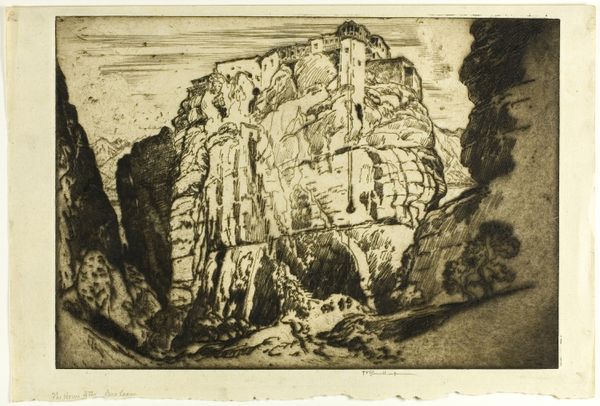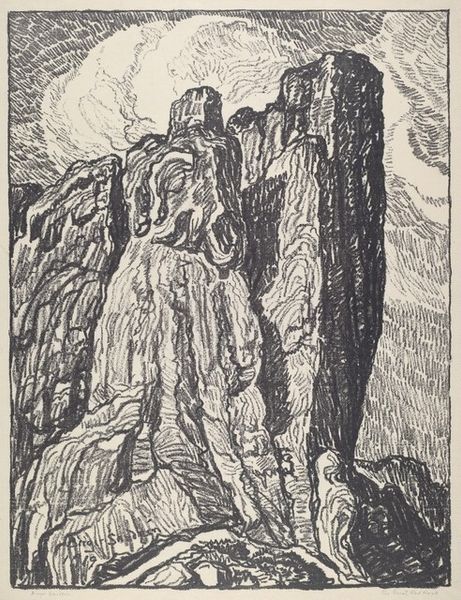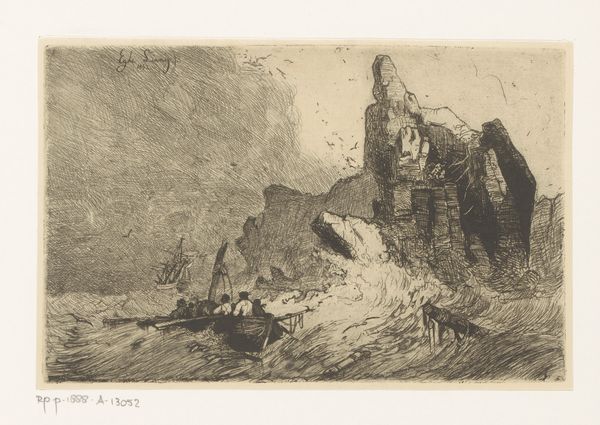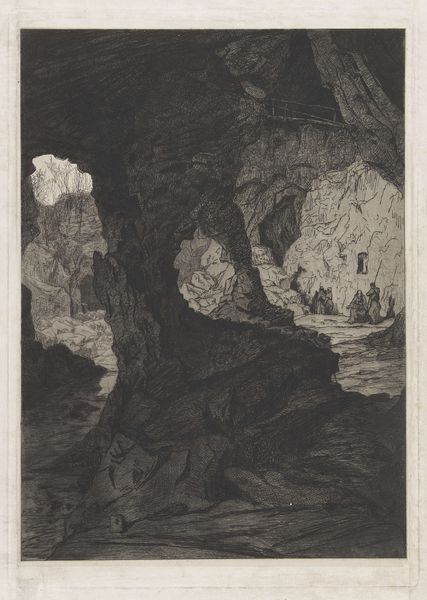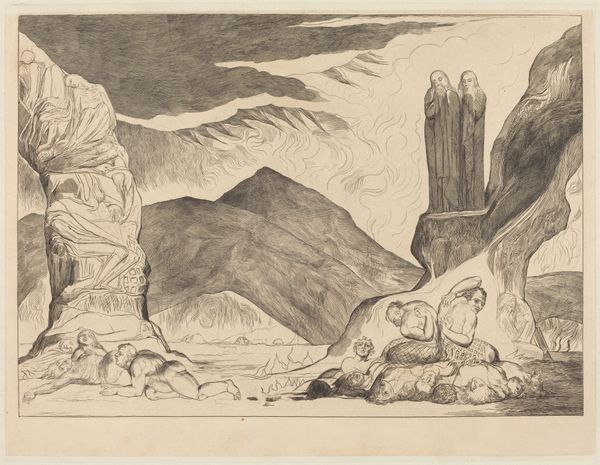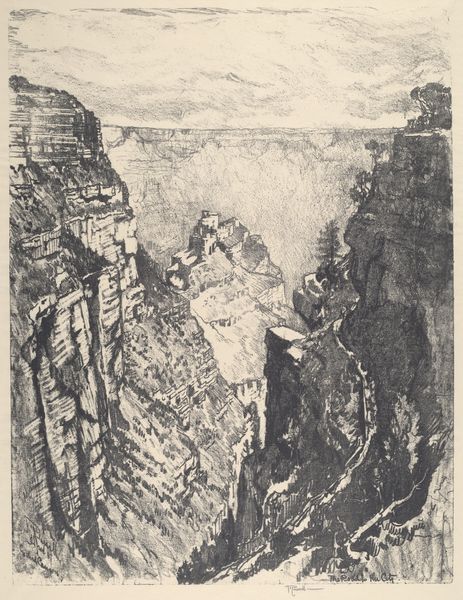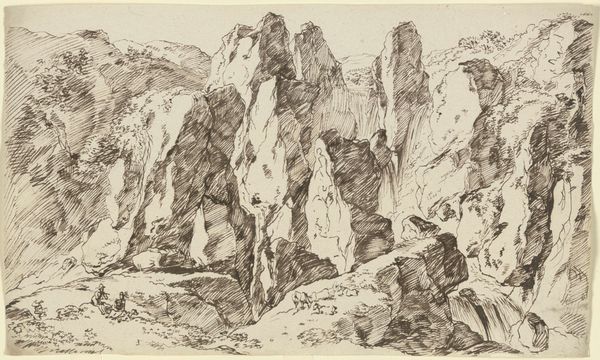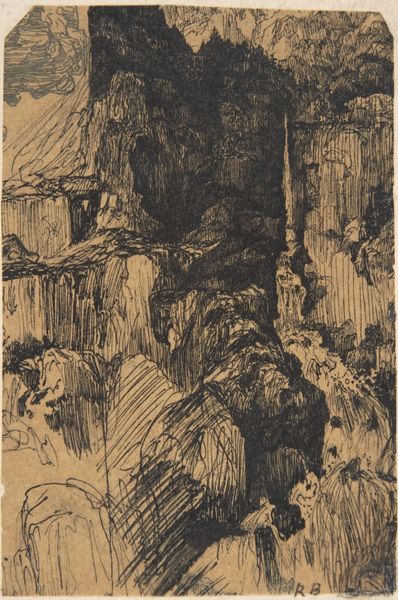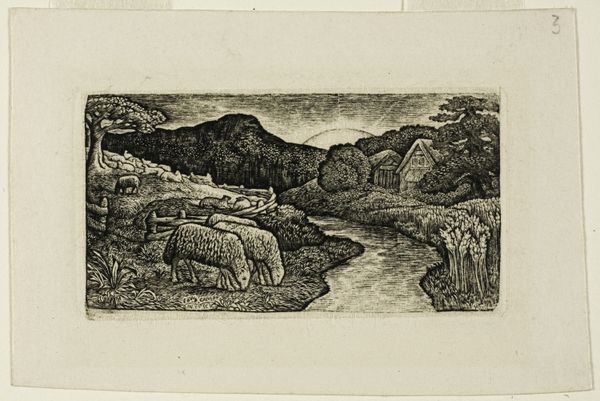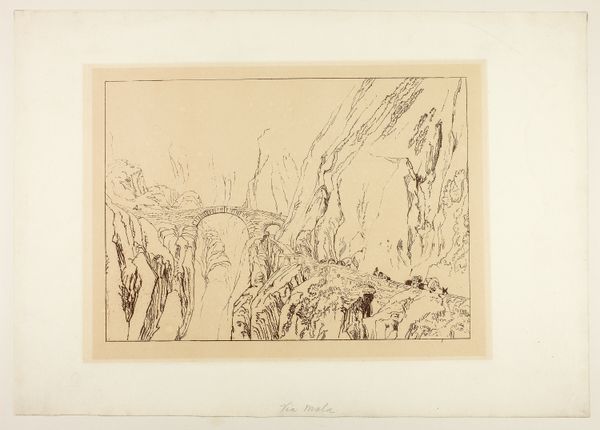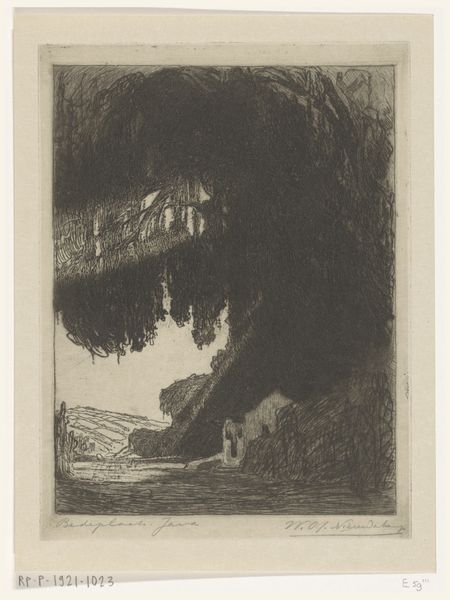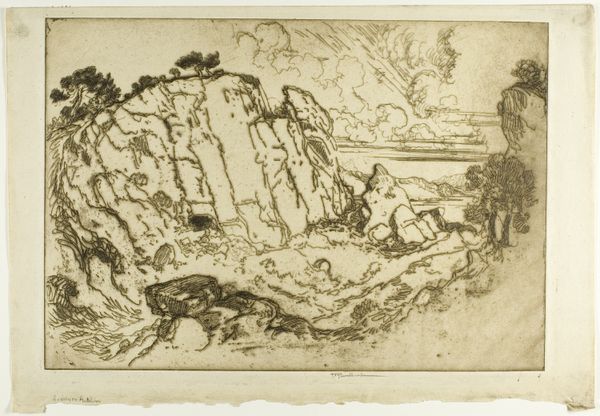
drawing, print, etching, paper
#
drawing
# print
#
etching
#
landscape
#
etching
#
paper
Dimensions: 262 × 378 mm (image); 300 × 443 mm (sheet)
Copyright: Public Domain
Editor: This is "The Holy Trinity of the Castles in the Air," an etching created in 1913 by Joseph Pennell, currently residing at The Art Institute of Chicago. It's a print of these incredible, almost impossible-looking rock formations with structures perched on top. What I find striking is the sheer ambition conveyed in its depiction; the land seems so far out of reach, doesn't it? What captures your attention in this print? Curator: The first thing that strikes me is Pennell's social commentary embedded within the picturesque scene. Look closely; do those ‘castles’ atop the formations evoke a sense of utopian society, or do they, in reality, become symbols of unattainable privilege? Etchings like this gained popularity, reaching broader audiences beyond the elite, thus inviting the viewer to ponder on issues of accessibility, the allure of distant lands, and constructed perceptions of wealth. Editor: That's fascinating! I hadn’t considered that angle. It appeared to me that he was idealizing this sort of...untouched paradise. Are you saying the ‘castle’ structures inherently bring socio-economic undertones into play? Curator: Absolutely. Consider the period. 1913 teetered on the brink of global conflict and significant social upheaval. The construction of paradise—the 'castle'—often relies on exploitation or unequal distribution of resources. So, when we see such imagery displayed publicly, what role did it serve, and for whom was it made? Do you think this image romanticizes an escape from those very anxieties or perhaps inadvertently highlights the increasing gap between different social stratums? Editor: I suppose I viewed this print through too narrow a lens! It’s eye-opening to consider the historical backdrop and how the artist might be subtly engaging with socio-political dynamics of the time. Thanks for enriching my perspective on Pennell's piece. Curator: It’s crucial to recognize that artworks aren't merely aesthetic objects but are enmeshed in a network of social and cultural forces. Viewing art from this contextualized vantage offers us deeper and much more resonant readings.
Comments
No comments
Be the first to comment and join the conversation on the ultimate creative platform.
